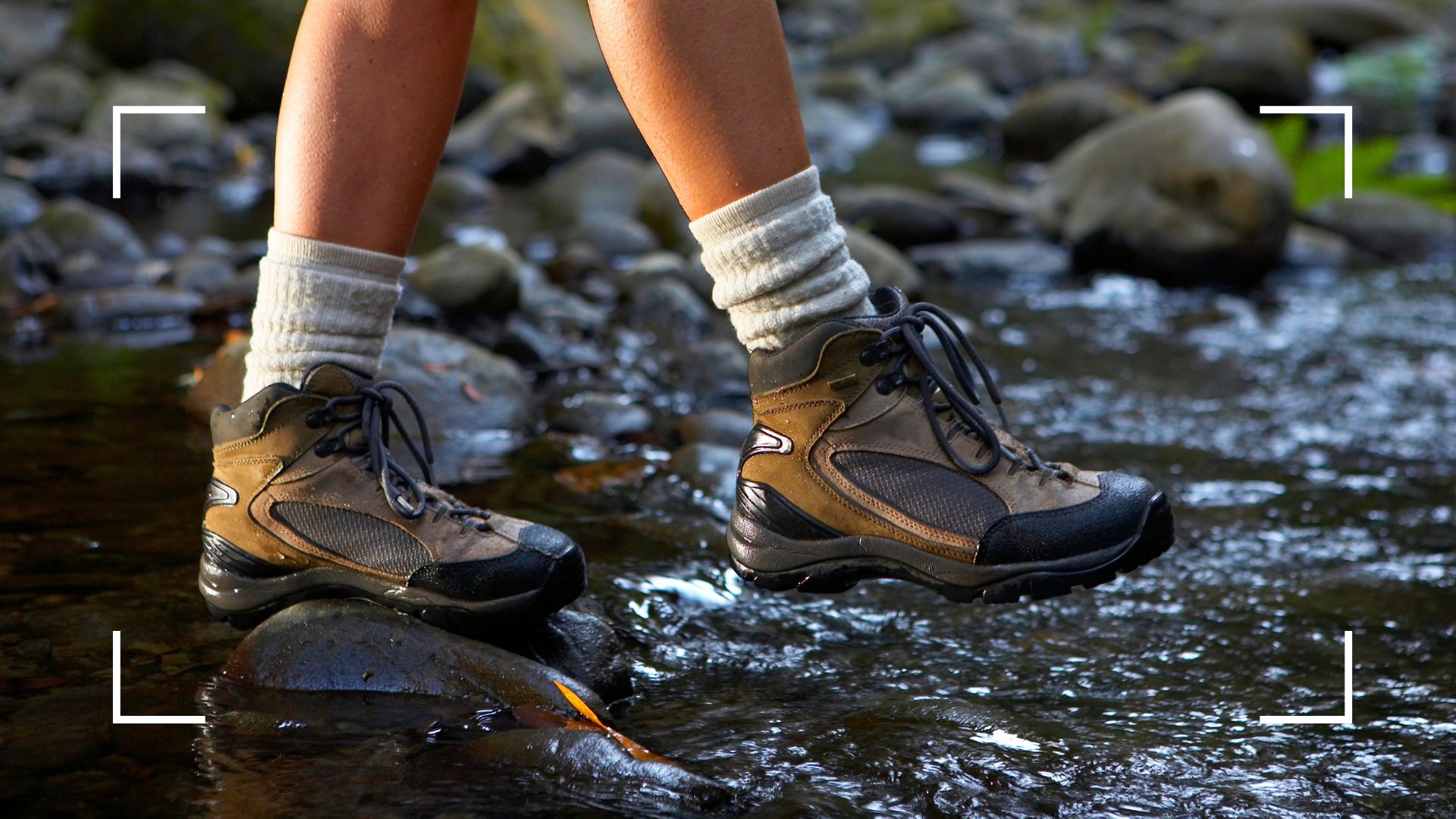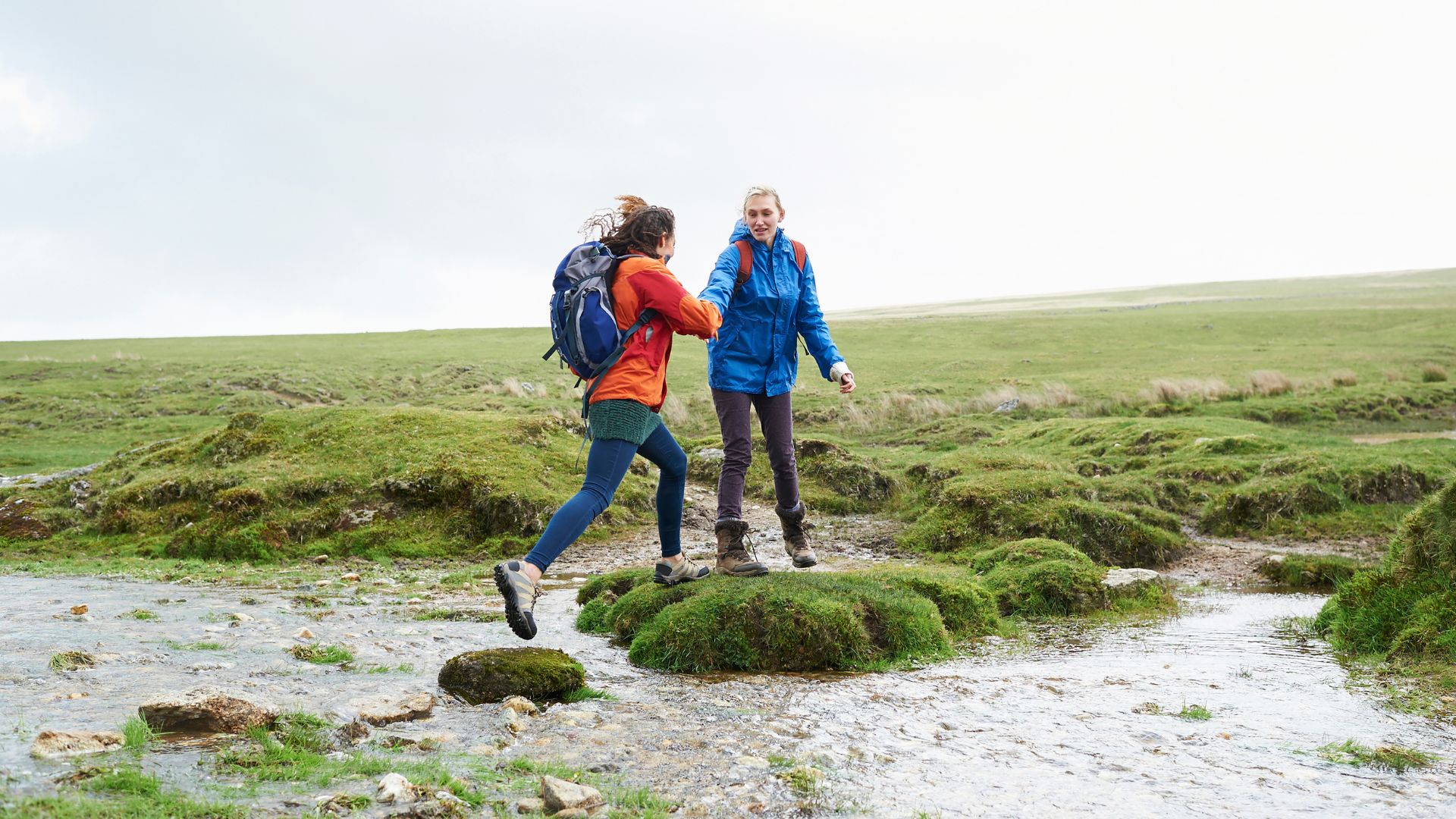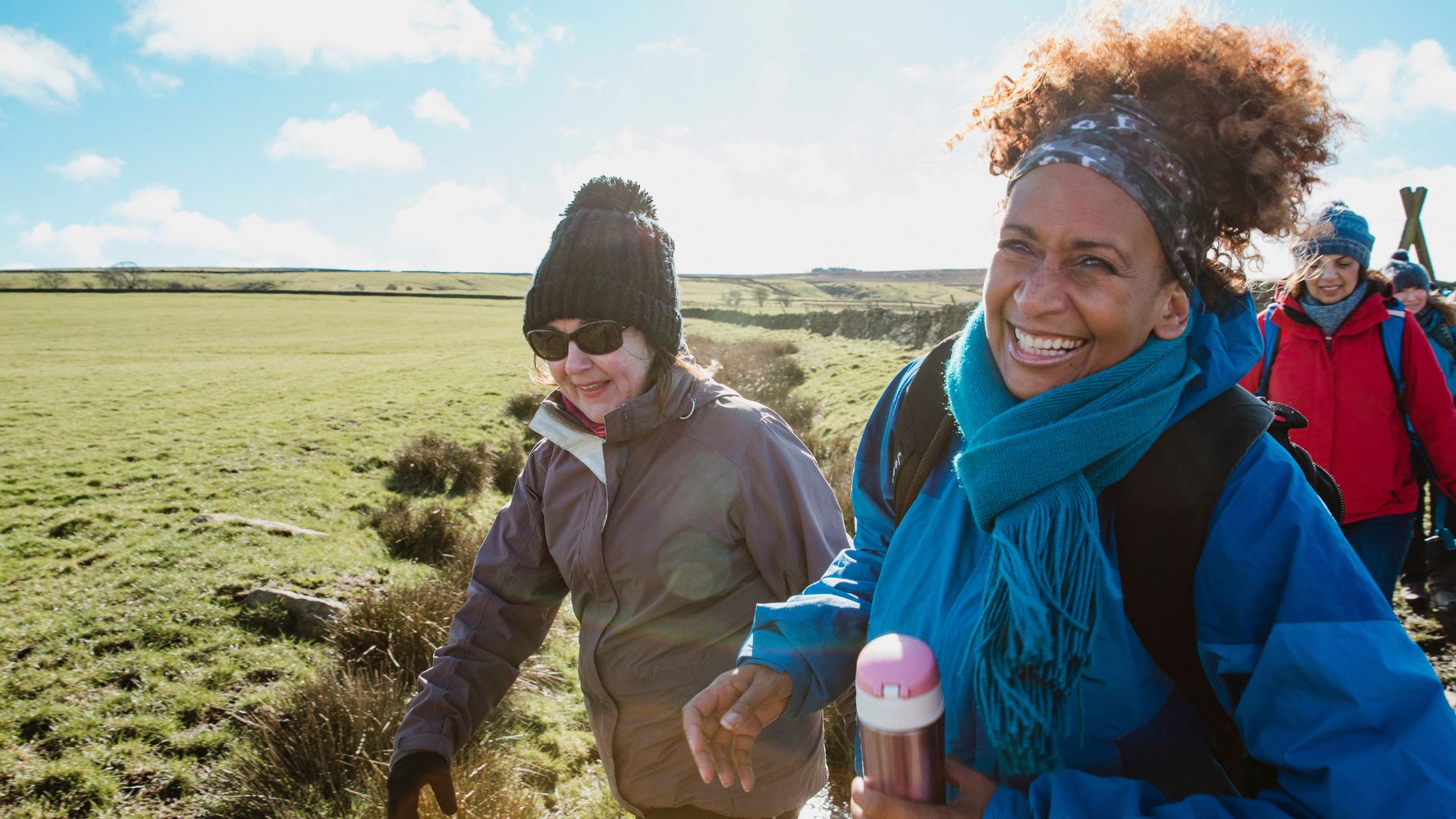How to keep your feet warm while walking this winter: 7 tips to keep the cold at bay
Experts explain how to keep your feet warm this winter and why it's so important for staying healthy


You'll need to know how to keep your feet warm this winter if you're planning on heading out to the trails or want to explore new walking routes around you. As the weather gets colder, the colder temperature tends to bring the rain, wind, snow, and slush with it, turning what would be a casual walk in the summer into more of a trek.
There are so many upsides to walking in the winter though, you shouldn't let a little cold weather put you off. With quieter walking routes outside of the peak season, you'll really get to experience all the benefits of getting out in the fresh air and the endorphin overload that comes with it. Plus, as long as you don't get cold yourself, frosty weather can give your immune system the boost it needs heading into winter.
To help you stay safe, we've asked the experts to lay out what you need to know about keeping feet warm while out walking this winter - no matter whether you're into a casual stroll for the health benefits of walking or want to take up Nordic walking for the first time.
How to keep your feet warm
1. Wear wool socks
Unsurprisingly, opting for warmer walking socks is one of the best ways to keep your feet warm during the winter months. "Wool socks with an extra interior lining will be best for warmth," suggests Dr Suzanne Bartlett Hackenmiller, a specialist in integrative medicine and outdoor therapy.
But whatever you do, if you're looking for how to keep your feet warm, avoid packing on multiple layers of thick wool socks as these will just make your feet sweat and as sweat cools down when it leaves the body, you could just end up even colder. "Do not put on any item of clothing that is thick or heavy, as this will cause you to overheat," says outdoor personal trainer Kira Mahal.

2. Make sure your socks are waterproof
You might be able to battle the cold with wool socks but if you're heading out post-rainfall, or in the winter months where snow and ice tend to cling to walking trails, keeping your feet dry will be key to staying warm.
"Socks with a waterproof outer material and taller boots rather than sneakers is a good idea to keep the interior of your shoe dry," says Bartlett Hackenmiller, who is also the chief medical advisor for AllTrails.
Sign up for the woman&home newsletter
Sign up to our free daily email for the latest royal and entertainment news, interesting opinion, expert advice on styling and beauty trends, and no-nonsense guides to the health and wellness questions you want answered.
Many outdoor adventure stores sell waterproof hiking socks, which are often made of wool as well, but SealSkinz's All Weather socks with HydroStop are a great option if you're looking to pick up some today. They're 100% waterproof with the addition of a silicone-free elastic taping around the cuff of the sock which cuts the chance of water pooling into your sock if you get caught out in a downpour.
3. Wear proper walking boots
When you're walking outdoors in winter, it's also important to consider the terrain you're on. As the weather gets wetter and colder, trails get icier and walking routes are much more prone to slippery conditions, so be safe with proper traction waterproof hiking boots.
"Traction is essential to facilitate a safe, no-slip hike among water and ice-laden terrain, so specialist hiking boots are ideal," says Dr Bartlett Hackenmiller.
If you're looking for a recommendation, we're loving the Cloudrock Waterproof shoes from On Running. Not only are they lightweight, making them easy to move in, but they're also completely wind- and waterproof with two mesh uppers. The outer sole combines zig-zag textures and multiple grip styles to keep you secure on trails where rain may have flattened the natural grip of the terrain as well.
4. Use toe warmers
Much like hand warmers, toe warmers are an essential tool in any hiker's backpack. Sold by the likes of Amazon and Walmart, these handy pads sit under your toes in your shoe and actively warm up your feet. They're also a great accessory to keep your feet warm at home if you're prone to cold toes more generally.
5. Prioritize layers
Layers are the name of the game when it comes to staying warm, no matter where you are, Dr Barlett Hackenmiller explains. "It's best to run hot rather than cold when out on a trail in the winter. Walking with a backpack can help you better manage your layers so you can add or remove clothing as you go."
Kira Mahal, who is also the founder of MotivatePT, agrees. "While you may think you'll overheat, if you select the right fabrics, you stay warm without overheating. Start with a thin layer of clothing that's made from moisture-wicking fabric. Then add a layer of thin wool to keep in the warmth, followed by a waterproof, yet breathable layer."
6. Pack out your shoes with paper, aluminium foil, or plastic wrap
If a spontaneous hike that started in sneakers is quickly leading to a slushy and cold descent, there's a last-minute fix for preventing cold feet: packing your shoes with paper, aluminum foil, or plastic wrap. It's not the most technical way to keep your feet warm but it's a classic cycling hack, famously used by competitors to stay warm on some of the earliest Tour De France races.
Take your material and wrap it around the front of your toes, wrap the sides and the rest of your foot up to your ankle for the best coverage, then place your foot into your shoe and tighten with the laces.
Aluminum foil or plastic wrap will be naturally a lot more water resistant than paper so bear this in mind if it's a particularly wet day.

7. Keep moving
When we exercise, our heart beats faster and this pumps more blood around the body to the muscles. This is an entirely natural process that makes us feel warmer, so you'll be able to keep your feet - and your entire body - warm through the day if you limit the number of times you stop on your walk.
"Standing still won't help keep you warm," PT Mahal stresses. "Start the workout with your feet, by doing activities like circling ankles and pointing and flexing the toes. Then, start off with some walking at a good pace." Or weigh up walking vs running and start your hike with a little jog.
As you're moving through the day, however, it's important to replenish your body with the nutrients you've used up for energy. "Fuelling up to stay warm can be a bit tricky," she explains, "You have to eat enough to give you energy and generate enough heat to keep you warm, but at the same time, you don't want to overeat as this can make you uncomfortable."
Eating foods that are easily digestible but release energy slowly will be key to this, she says. "These can include oatmeal, bananas, peanut butter on toast and pasta. You need to also ensure you continue to drink plenty of fluids during and after your workout as you can get just as dehydrated in the winter as you do in the summer."
Why is it important to keep your feet warm?
When you're walking outdoors in the winter, it's essential to learn how to keep your feet warm for several reasons, explains medical advisor Dr Suzanne Bartlett Hackenmiller. "Aside from general discomfort, it can be dangerous to expose yourself to too much cold without the right protection for your body. Cold weather also brings about more dangerous walking conditions in the form of ice, snow and slush."
According to several studies, including those by the University of Oulu and Cardiff University point to evidence that shows a direct correlation between lower temperatures and the risk of developing the flu. In many cases, it's not so much the cold itself but a decrease in temperature; something that's bound to happen if your feet get cold.
A following review by Cardiff University explains the interesting reason behind this. When the surface of our body gets cold, the blood vessels in our nose and upper airways constricts, which can prevent a proper respiratory defence and cause the onset of common flu symptoms. So being safe in the cold really is essential, both for enjoyment on the hiking trails and your overall health.
If you are walking this winter, Dr Barlett Hackenmiller has one final piece of advice: Try to always walk with a partner. Not only is walking with a friend safer as you can help each other out with additional layers if needed and call for help if you get too cold, she says, "a walking partner helps provide accountability when it's hard to find the motivation in the cold months."

Grace Walsh is woman&home's Health Channel Editor, working across the areas of fitness, nutrition, sleep, mental health, relationships, and sex. She is also a qualified fitness instructor. In 2025, she will be taking on her third marathon in Brighton, completing her first ultra marathon, and qualifying as a certified personal trainer and nutrition coach.
A digital journalist with over seven years experience as a writer and editor for UK publications, Grace has covered (almost) everything in the world of health and wellbeing with bylines in Cosmopolitan, Red, The i Paper, GoodtoKnow, and more.
-
 Cat Deeley's simple approach to self-care makes it so easy to feel good every single day
Cat Deeley's simple approach to self-care makes it so easy to feel good every single dayNo matter how little free time you might have
By Charlie Elizabeth Culverhouse Published
-
 What is ‘tile drenching’ and why is it the biggest design trend of 2025?
What is ‘tile drenching’ and why is it the biggest design trend of 2025?Expert insight and guidance on ways to bring this popular trend into your home, no matter your style
By Natasha Brinsmead Published